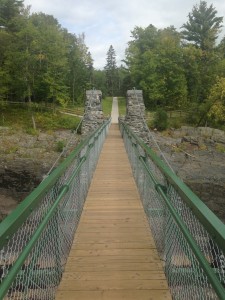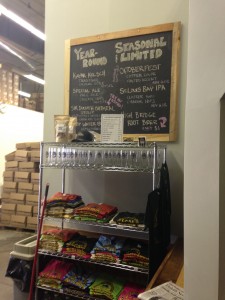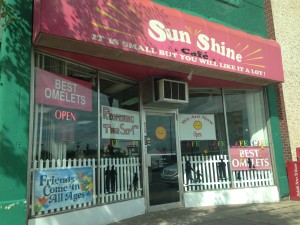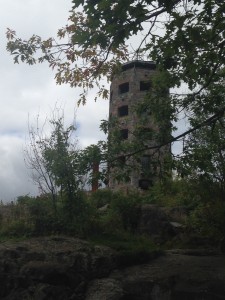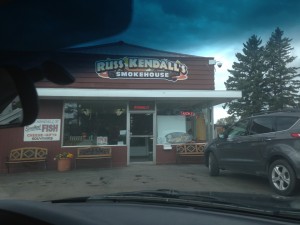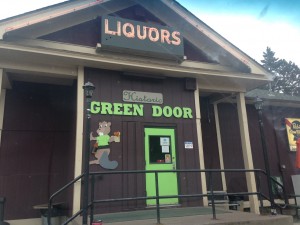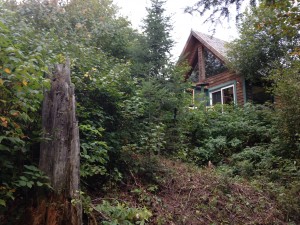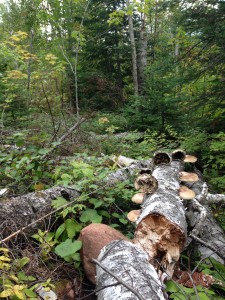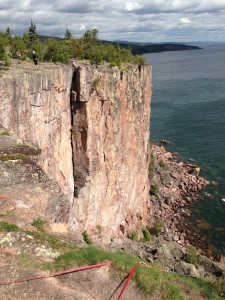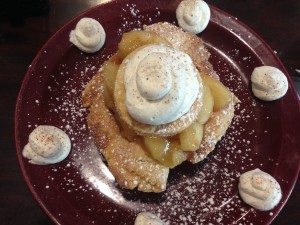Something I neglected to mention in my post in part 1, was that following the Roman Baths, we walked back to our hotel room along the River Avon, the river that is my home town’s namesake. The river is very slow moving, but what it lacks for in its own momentum more than makes up for in the number of boats that graces the river’s presence. Boat upon boat tied up along the riverbank, all lined up as if they were cars stuck in traffic. But these weren’t just any old boats that you would take out for a Sunday cruise. These boats seemed to be either people’s homes or available to rent (or rather, for hire, as they would say over here), and they came compete with beds, kitchens, and–I imagine–toilets. And as we walked past them at dinner time, kitchen tables were set with placemats with proper dishware and proper cutlery. I could never imagine this happening on a boat in the US. Maybe it does somewhere. But not anywhere I’ve seen. It was just generally so wonderful to see basic dinner etiquette followed, even in the most unexpected places.
Now, so far I’ve talked about the things that the UK seems to be miles ahead of compared to us Americans, from credit cards, trains, and dinner etiquette. But something that is another world altogether is their road system. To preface, there’s a hilarious episode of Fawlty Towers (well, they’re all hilarious) called “Waldorf Salad.” The episode features an American guest, and naturally he complains loudly about the weather, the size of the cars, driving on “the wrong side of he road,” and the fact that Basil doesn’t know what a Waldorf salad is. He also complains about the size of the streets, referring to the M5 as a “little backstreet.”
Beyond getting used to driving on the left side of the road, I found that sometimes the greater challenge was making my way around some very narrow streets indeed, and the American’s comment in Fawlty Towers about a major motorway in Britain being the size of a backstreet seemed to ring a bit of truth. (Although, in due time, I will eventually drive on the M5, and it is, indeed, not a little backstreet.)
My endeavors driving in the British fashion began thus… Before we made our way to Stonehenge, we wanted to make a quick trip to the Royal Crescent, a large structure shaped in, well, a crescent, erected 1767-1775 and designed by architect John Wood. Getting there would have been impossible for us without the GPS as it directed us to seemingly turn left three times, go through several roundabouts, turn left some more, and then left again, go through several more roundabouts, wait on the side of the street to let oncoming traffic through, turn right, then left twice in quick succession, turn right, and then left once more, but not before allowing some more cars to go through while we waited on the curb (or kerb, rather). I remember hoping that this wasn’t a harbinger of things to come, and that driving in the countryside would be much easier, that only large cities like Bath have such a tangling mess of streets not wide enough even for a single car let alone two.
Anyway, we did manage to arrive, and it was simply marvelous to see the Royal Crescent. It is a masterpiece in Georgian design, and it’s currently used as residential space. While we marveled at it, we noticed a bird the size of a common pigeon but colored in black and white. My mother asked a handsome passerby who explained that these birds are called magpies, and that they usually travel in pairs. We didn’t notice this one’s pair, but she (or he?) was beautiful indeed.
As we made our way from Bath to Stonehenge, the GPS directed us to take mainly roads that began with an A followed by a number and a B followed by number. The A roads might I suppose roughly translate to the US’s state highways that sometimes are only two lanes but might sometimes develop into a freeway (a duel carriageway in the UK). The B roads are more like the US’s county roads (well, kind of).
What struck me about even the A roads, was that duel carriageways were largely there to help people pass in the way that certain US highways would add a passing lane for three miles to a two lane road. Furthermore, sometimes even the A roads would become so narrow, that things became uncomfortably close, not only between my car and the oncoming traffic, but also to the edge of the road on my left, which was never built with a shoulder, never raised above he natural ground level, and was frequency flush with well trimmed shrubs or entire buildings or a narrow sidewalk that pedestrians actually walked on. And sometimes you have to make room for bicyclists, too, and everyone was very friendly toward cyclists, which was so, so wonderful.
My mother and I frequently had a really good laugh about these roads. Especially since there are portions of these ridiculous roads that are legal to travel 60 miles an hour when in the US they would never allow anything much past 45. “Crazy!” I kept exclaiming. To the Brits credit, even though the posted speed was 60, they would at least paint SLOW on the roadway to alert you of oncoming things like sudden turns, etc. However, in the States, frequently turns are marked with their own speed limit, like 45 in a 55 zone. But over in the UK it seems much more relaxed.
The craziest moments, though, came on the B roads. These roads never developed into three or four lanes, and when the road became so narrow, so encased by a 3 meter high corridor of trimmed hedges, then a sign would warn us, literally, “Oncoming Traffic in Middle of Road.”
Yes. Really.
“Oncoming Traffic in Middle of Road.”
No need to expand roads here when instead you can just put a sign up that cautions, “Don’t worry, old chap. Just mind the oncoming traffic. It might be in the middle of the road, but just tread softly, softly, there’s a good fellow. Cheers.”
So that’s the way it was as we made our way to Amesbury to see Stonehenge. On the way there, we stopped at a cafe on the side of the road called the Angelfish that continued to confirm that the food we had at Marlborough Head just wasn’t very good. I had an omelet and my mother a ham and egg sandwich, and both were zesty and flavorful. We also had some milkshakes that were very different from our American counterparts. They were more like flavored milk with a scoop of ice cream. Oh well… Can’t win them all.
But, what the milkshakes lacked in satisfaction, Stonehenge more than made up for in sheer marvelousness. (Hm… did I just mention milkshakes and Stonehenge in the same sentence?)
In short, though, Stonehenge was absolutely fantastic. It’s one of those places like the White House or the Eiffel Tower or the Rocky Mountains. You see so many pictures of it, and then you finally see it in person with your own eyes, and it’s absolutely surreal. Forget the Romans (well, don’t forget them), but now Stonehenge is the oldest piece of architecture I’ve ever seen. And so absolutely fascinating learning about how it was put together and how accurately it aligned with the summer and winter solstice.
Really, though, so wonderful to see Stonehenge! Absolutely fantastic and brilliant! It was so overwhelming to imagine the people who moved these stones, who sanded these stones, who erected these stones. The hands that touched these stones. The organization involved in planning such a structure. The minds that devised such a feat in architecture. The ancestors who used these stones for their celebrations. Absolutely marvelous!
After Stonehenge, farther south we decided to go, in order to pay a visit to Henry VIII’s Portland Castle outside Weymouth, right on the coast, overlooking Weymouth Bay. (But not before checking into our hotel and having a good night’s sleep.)
Portland Castle, like Stonehenge, was also quite fantastic to see. It was really quite overwhelming to think about the kings and queens who walked these halls, the soldiers who readied canons in the various chambers, the men and women who later lived in it as a private residence. America doesn’t have history like this. Well, I mean, it does. It takes the form of artifacts from our American Indian ancestors, and then things like mines from gold rushes, forts of the Civil War, White Houses, and monuments. And that’s fine. But we tear so much of our stuff down after very little use, mainly because we insist on building things with wood. But even entire railway and streetcar systems just get paved over and forgotten in the name of expanding freeways. So sad. We could do with an alignment in our priorities.
Sorry. Soap box over.
Following Portland Castle (after petting and taking too many pictures of a really friendly black and white cat and taking tea at the Portland Castle’s tea room), we headed farther west to Torquey.
And it was in Torquey that we stumbled across a really marvelous find.
But I shall tell you about that in my next post…

